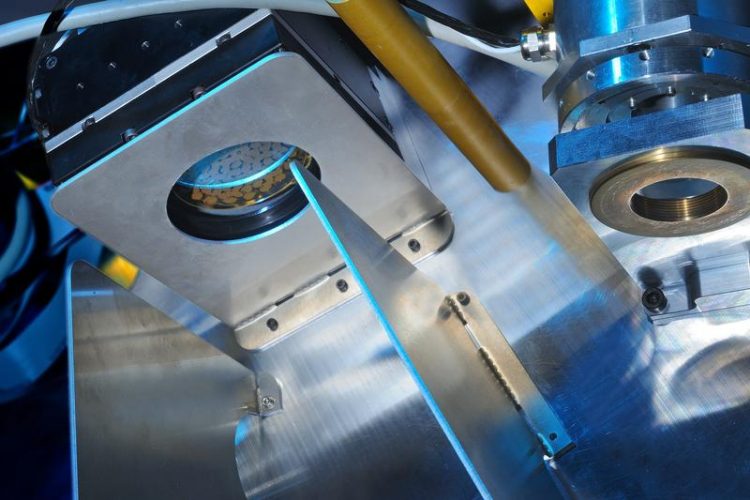Surface Finishing at High Speed

With the integrated mirror, the laser beam is adapted to the processing situation with switching intervals of less than five milliseconds. © Fraunhofer ILT, Aachen, Germany
Even the name promises speed: Since 2016, an international team with companies and institutes from Germany, Belgium, the Netherlands, Israel and Switzerland has been researching and developing “Ultra Dynamic Optical Systems for High-Throughput Laser Surface Processing”. Two new laser optics for the near infrared range will reduce the processing time of surfaces ideally to one-tenth and cut costs by half.
Active beam shaping in milliseconds
One of the optics is specifically designed for the polishing and processing of thin layers with lasers. To accomplish this, the research team relies on a continuously adjustable piezoelectric deformable mirror (PDM). This ensures that the laser beam adapts to the processing situation with switching intervals of less than five milliseconds, thus very quickly.
“The laser beam is reshaped depending on the angle of incidence so that its projection on the work piece surface always has the same shape and the intensity remains constant,” explains the graduate physicist Judith Kumstel, expert in laser polishing at Fraunhofer ILT.
This manipulation is important because only if the three-dimensional beam is continuously adapted at high processing speeds and hits the surface with constant intensity will the result of the laser processing always be the same – even with complex shaped components and constantly changing angles of incidence. On the other hand, if the laser beam projection deforms on slanted surfaces, the quality of the processed 3D surface also deteriorates.
A different approach was developed for laser structuring. The second new optics allows four beams to be used in parallel, instead of the usual single beam, to increase processing speed and productivity. With a diffractive optical element (DOE), the laser beam is split into a square beam of four partial beams.
In conventional multi-beam concepts of this kind, the focusing optics, as well as the shape of the component lead to a distortion of the projected beam. In the ultraSURFACE project, a special system has been developed with which each individual partial beam can be adjusted in its position within milliseconds so that there is always a square beam for processing.
Laser finishing becomes affordable
Two compact optical modules are currently being developed. The ultraSURFACE team will test their potential in a new laser system in various applications until the end of 2018. A Swiss company is building an industrial-grade machine that can be used to polish, structure and coat flexibly, cost-effectively and with unrivaled speed thanks to the quickly interchangeable optical modules. Kumstel explains, “With the concepts developed in this project, surfaces will soon be processed just as well as with conventional systems.
Thanks to the new optics and the new machine, processing will be ten times faster than before, so that laser-based surface finishing will offer a cost-effective alternative to conventional surface finishing for many companies from various industries – even for small job shops”.
Dipl.-Phys. Judith Kumstel
Group Polishing
Telephone +49 241 8906-8026
judith.kumstel@ilt.fraunhofer.de
Dr.-Ing. Edgar Willenborg
Group Manager Polishing
Telephone +49 241 8906-213
edgar.willenborg@ilt.fraunhofer.de
Media Contact
All latest news from the category: Materials Sciences
Materials management deals with the research, development, manufacturing and processing of raw and industrial materials. Key aspects here are biological and medical issues, which play an increasingly important role in this field.
innovations-report offers in-depth articles related to the development and application of materials and the structure and properties of new materials.
Newest articles

NASA: Mystery of life’s handedness deepens
The mystery of why life uses molecules with specific orientations has deepened with a NASA-funded discovery that RNA — a key molecule thought to have potentially held the instructions for…

What are the effects of historic lithium mining on water quality?
Study reveals low levels of common contaminants but high levels of other elements in waters associated with an abandoned lithium mine. Lithium ore and mining waste from a historic lithium…

Quantum-inspired design boosts efficiency of heat-to-electricity conversion
Rice engineers take unconventional route to improving thermophotovoltaic systems. Researchers at Rice University have found a new way to improve a key element of thermophotovoltaic (TPV) systems, which convert heat…



